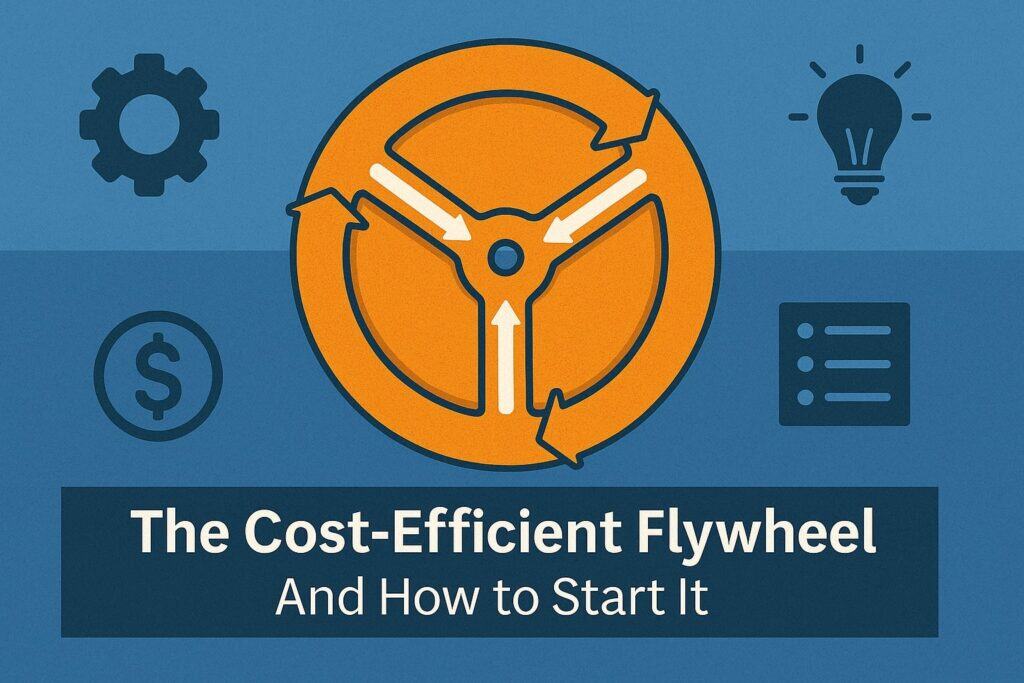
Content Marketing on a Budget: Small Business Tips
Content marketing on a budget is not a consolation prize. It is a strategy that forces clarity. With limited resources, you focus on the few actions that move revenue, instead of chasing every shiny trend. That discipline gives small businesses a real edge. You can act quickly, test fast, and double down on what your audience actually wants.
Another advantage of content marketing on a budget is compounding return. Evergreen posts, helpful how-to guides, and authentic case studies continue to bring organic traffic long after the initial work. When you target questions your buyers are already asking, your content earns clicks without paying for every visit. That lowers your blended customer acquisition cost and builds authority.
Finally, content marketing on a budget rewards proximity to the customer. Large brands often publish generic pieces. You can win by addressing niche pain points, local search intent, and industry-specific jargon.
That intimacy increases time on page, boosts engagement, and leads to qualified leads. The result is a resilient engine: publish helpful content, capture demand, nurture with email, and convert with offers—without overspending.
The cost-efficient flywheel and how to start it

Think of content marketing on a budget as a flywheel with three spokes: insight, creation, and distribution. Insight comes from conversations, reviews, support tickets, and community posts.
Creation turns those insights into specific assets: checklists, FAQs, and comparison pages. Distribution pushes the assets where buyers already are: search, newsletters, and social.
Start by building a single “pillar” resource that solves a painful problem for your ideal customer. Surround it with short “spoke” posts that answer sub-questions and link back to the pillar. Use simple keyword research to validate demand, and structure your pages for featured snippets.
Then repurpose: convert the pillar into a webinar outline, a slide deck, a one-page PDF, and a series of social posts. By repackaging one strong idea into many formats, you keep costs low while expanding reach. Rinse and repeat monthly, and your budget-friendly content flywheel gains momentum.
Set the right goals and metrics before you create anything

Content marketing on a budget needs measurable goals. “Get more traffic” is not a goal. “Add 300 qualified visitors from local search in 60 days” is better. Tie each goal to a funnel stage: awareness, consideration, or conversion.
For awareness, measure impressions, new users, and branded search. For consideration, track time on page, scroll depth, and resource downloads. For conversion, monitor demo requests, quote forms, calls, and assisted conversions.
Build a simple scorecard. Every two weeks, review page-level performance, top entry pages, and drop-off points. Use UTM parameters on every link you share. Add a lightweight lead magnet—like a template or price calculator—that maps to your service.
Connect form submissions to your CRM so you can attribute pipeline to specific posts. This keeps content marketing on a budget accountable.
Avoid vanity metrics. A viral post that brings the wrong audience wastes time. Pick five core metrics and ignore the rest for 90 days. Use a benchmark: for example, two pieces per month should generate one sales conversation by month three.
If not, refine topics, intent, or offers. When you treat content marketing on a budget like a scientific test, you keep costs tight and impact high.
A simple KPI stack any small business can use

Adopt a three-layer KPI stack. Layer one is Reach: organic sessions, new users, and email list growth. Layer two is Engagement: average engaged time, click-through rate to internal CTAs, and content download starts.
Layer three is Revenue Impact: marketing qualified leads, sales qualified opportunities influenced, and closed-won attributes. Put these in a one-page dashboard.
Implement minimum viable tracking. Install analytics, set up conversion goals, and tag your CTAs. Create a naming convention for campaigns so you can sort results by offer and channel.
Review weekly for directional trends and monthly for strategic changes. This clarity helps content marketing on a budget avoid guesswork and prioritize assets that drive profit.
Know your audience deeply without expensive research
You do not need a big research budget to understand buyers. Start with what you already have. Read five-star and one-star reviews—yours and competitors’.
Study language in support emails and chat transcripts. Record how customers describe their problems, not how you describe solutions. That vocabulary becomes your headline copy and your SEO keywords.
Next, run two short interviews per month with recent customers. Offer a small gift card. Ask what triggered their search, what alternatives they considered, and what nearly stopped them from buying.
Keep the call to 20 minutes and transcribe it with a free or low-cost tool. This is content marketing on a budget at its smartest: direct, qualitative insight that shapes every post.
Finally, validate with quick polls. Use social stories, a community group, or a one-question survey on a thank-you page. Ask, “What’s the one thing you wish you knew before buying?” The answers become article titles.
When you lean on real customer language and micro-surveys, content marketing on a budget stays laser-focused and persuasive.
Build one lean persona and a job-to-be-done map
Instead of five personas, build one practical persona that represents your highest-value buyer. Give it a real name and three concrete traits: the main job they must get done, the constraints they face, and the success metric they care about.
Then map a simple journey: trigger, search query, comparison, and decision. At each step, list the questions they ask and the proof they need.
Turn that map into a content backlog. Create a “pain-promise-proof” structure: a post that names the pain, promises an outcome, and provides proof like a case study, calculator, or testimonial.
Add internal links between related posts to reduce bounce and increase relevance. This clarity helps content marketing on a budget convert curiosity into leads.
Create smart, low-cost content formats that punch above their weight
You do not need cinematic video to win attention. Choose formats that are cheap to produce and rich in utility. Start with checklists, step-by-step guides, pricing explainers, and comparison pages.
These match high-intent searches and are perfect for content marketing on a budget. Add templates: spreadsheets, scripts, or email sequences that save readers time. People link to tools.
Short videos work, too. Film on a phone with natural light. Script three talking points and a single call to action. Turn the audio into captions, and the transcript into a blog post. Publish natively on the platform where your audience hangs out. One recording session can produce multiple clips for a month.
Do not overlook user-generated content. Ask customers to share photos or quick stories about how they use your product. Feature them in a monthly roundup. This builds community and social proof without production costs. The golden rule of content marketing on a budget is utility over polish. If it solves a problem right now, it earns attention.
The “Pillar + Spokes + Assets” production model
Build one 2,000-word pillar page that fully answers a core problem. Then produce four spoke posts that tackle sub-topics and link both ways. From there, cut the best insights into a one-page checklist, a downloadable PDF, three short videos, and a week of social posts. Schedule all of it over four weeks.
This model stretches every hour you invest. It also improves SEO by creating a topical cluster around a primary keyword. Internal links help search engines understand your authority, and they help readers navigate. For content marketing on a budget, this is compounding leverage: one idea, many assets, sustained distribution.
Distribute smarter: get 80% of results from free and low-cost channels
Publishing is half the job. Distribution is the other half. For content marketing on a budget, prioritize channels where your customers already spend time. Start with search: optimize titles, meta descriptions, headings, and internal links. Then use your email list. Even a small list can drive meaningful traffic when you show up consistently.
Leverage social platforms with intent. Pick one primary platform and one secondary. Share native posts that summarize the key point, invite conversation, and link in the first comment if needed. Join two niche communities or groups and contribute weekly.
Do not spam; answer questions and link only when relevant. Over time, you become the go-to helper, and your content earns organic reach.
Partnerships are a powerful multiplier. Co-create a guide or webinar with a complementary business and share the audience. Swap newsletter placements. Offer to write a guest post that solves a problem their readers care about. These collaborations give content marketing on a budget access to new prospects without ad spend.
A weekly distribution playbook you can repeat
Use a simple, repeatable cadence. Monday: publish or refresh one post and submit it to search indexers if available. Tuesday: send a short educational email that highlights one insight and links to the post. Wednesday: share two native social posts—one story, one tip. Thursday: post a how-to clip and answer five questions in a community. Friday: pitch one partner for a content swap or guest feature.
Track what moves the needle. Which posts get replies? Which clips get saves or shares? Double down on those formats. This minimal but consistent system keeps content marketing on a budget active across channels without burning out your team.
Optimize for search without hiring an agency
SEO does not have to be expensive. For content marketing on a budget, focus on fundamentals. Start with intent: make sure each page solves the exact query it targets. Add the primary keyword to the title, H1, first 100 words, and meta description.
Use related terms naturally. Structure content with clear H2 and H3 headings so search engines and readers can skim easily.
Build internal links. Every new post should link to two older posts and receive two links from them. Create a lightweight schema markup for articles, FAQs, and products if relevant. Improve load speed with compressed images and clean code. Use descriptive alt text for accessibility and image search.
Do not chase backlinks blindly. Earn them by publishing unique data, calculators, or templates. Pitch two relevant sites per month with a concise email: what their readers will gain, and why your piece is different. This steady, ethical approach keeps content marketing on a budget sustainable and effective.
Keyword research the lean way
You do not need a paid suite to find opportunities. Start with Google’s autocomplete and “People also ask” questions. Plug a competitor’s URL into a free tool to see what they rank for. Identify low-competition, long-tail phrases that match buyer intent. Prioritize terms that include modifiers like “best,” “near me,” “pricing,” “how to,” or “vs.”
Group keywords by topic, not just volume. Build topical authority with clusters that cover the breadth of a problem. Write one comprehensive piece and several focused posts. Track rankings monthly, not daily.
Update underperforming posts by clarifying the intro, adding a missing step, and answering a related sub-question. This pragmatic method keeps content marketing on a budget aligned with real search demand.
FAQs
Q.1: How often should I publish when I’m doing content marketing on a budget?
Answer: Quality beats quantity, but cadence still matters. For most small businesses, one strong post per week is realistic and effective. It gives search engines a steady signal, grows your library, and keeps your audience engaged.
If weekly is too much, commit to two posts per month and make them excellent. Pair each post with a distribution plan: one email, two social summaries, and a short video derived from the article. That repurposing maximizes every idea. Consistency matters more than bursts.
A reliable schedule trains readers to expect your perspective, and it helps you iterate based on real data. Review results every month, prune topics that do not move pipeline, and double down on the posts that attract qualified leads.
Over six months, this disciplined approach to content marketing on a budget produces compounding reach and trust without overwhelming your resources.
Q.2: What are the best free or low-cost tools for content marketing on a budget?
Answer: Choose a lightweight stack you can maintain. For planning, use a free project board like Trello or Notion to store ideas, keywords, and briefs. For writing, Google Docs plus a grammar checker is enough.
For SEO basics, rely on free keyword tools, autocomplete, and search console to monitor queries. For visuals, use a free design tool with templates to create thumbnails and social graphics quickly.
For video, your phone camera and built-in editor will do; add captions with a subtitle app. For analytics, use a free web analytics platform and connect it to your site goals. For email, start with an entry-tier service that offers automations and basic segmentation.
Most importantly, document your workflow: brief → draft → edit → publish → distribute → measure. The process—not a fancy tool—keeps content marketing on a budget consistent and effective.
Q.3: How do I measure ROI from content marketing on a budget if my sales cycle is long?
Answer: When deals take months, rely on leading indicators and assisted conversions. Map touchpoints: first visit, repeat visit, download, demo request, and closed-won. Attribute value to each stage.
Track content-assisted pipeline by tagging every call-to-action and mapping form fills back to the specific page that drove them. Use cohort analysis: compare users who engaged with two or more pieces of content against those who did not.
Watch for higher reply rates, shorter sales calls, or better close rates in the content-engaged cohort. These are valid ROI signals even before revenue lands. Also track revenue lag by content theme.
Some topics are educated early, others convert late. Over time, a modest, consistent library proves its worth. This is the power of content marketing on a budget: durable assets that influence the pipeline even when advertising stops.
Conclusion
Content marketing on a budget is not about doing less. It is about doing what matters most, in the right order, and repeating it until it compounds. Start with a single high-value problem, build a pillar resource, and support it with focused posts.
Repurpose every idea across email, social, and short video. Measure a lean set of KPIs so you can refine quickly. Partner with complementary brands to expand reach without paying for ads. Keep your tools simple and your process tight.
Most of all, lead with usefulness. When your guides, checklists, and templates genuinely help, people return. They subscribe. They recommend you. Over time, you build an owned audience and lower your acquisition costs.
That is the long-term advantage of content marketing on a budget. With clarity, cadence, and care, your small business can compete—and win—against bigger players while spending far less.